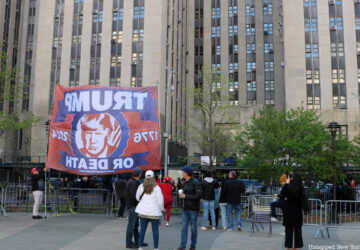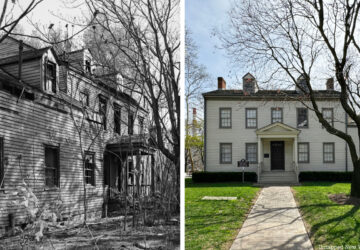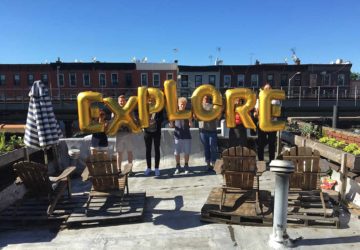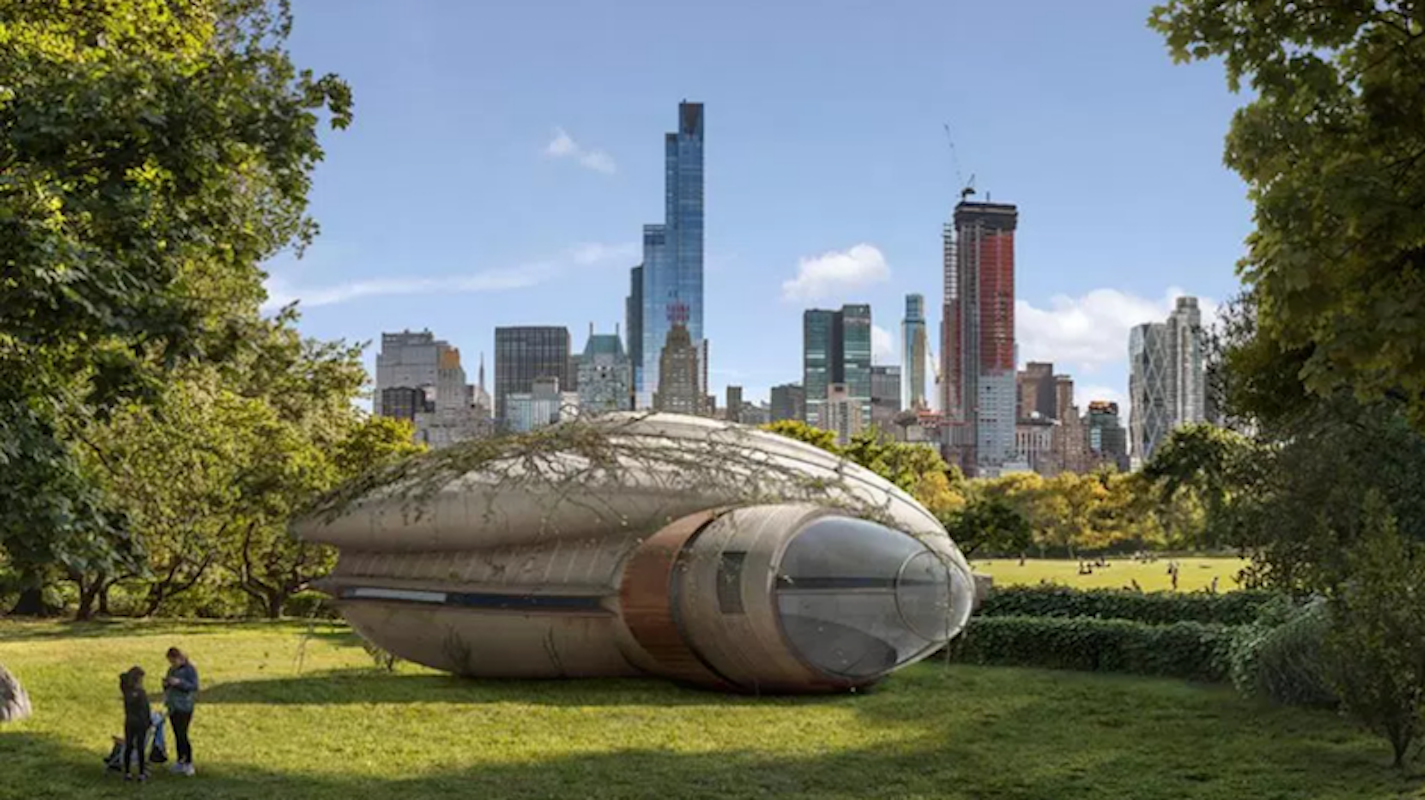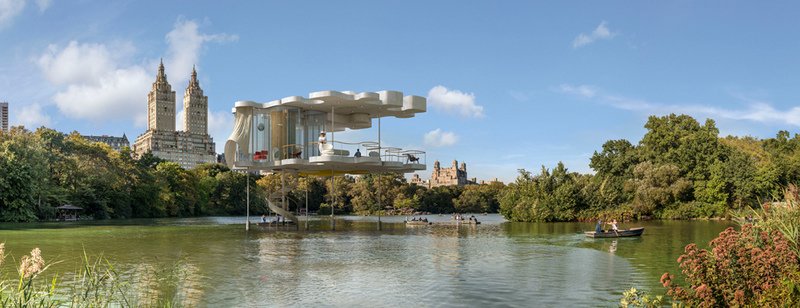 Lady Gaga’s Belvedere, 2017. Image via the Galerie Richard
Lady Gaga’s Belvedere, 2017. Image via the Galerie Richard
What if Central Park was reimagined? Or the skyline of New York City reconfigured? A new photography exhibit at Galerie Richard by Seville-based artist Dionisio González’s probes these questions. “Skyscrapers and Central Park co-exist dialectically,” the photographer writes, and the exhibition, mean to co-exist together as part of the theoretical exploration, consists of two parts, one titled Dialectic Landscape and the other called Thinking Central Park.
The “Thinking Central Park” photographs are set strategically in mostly empty parts of the park. The concept behind this installation was to equip the “void” that is Central Park, according to González, with makeshift shelters and refuges. They were each inspired by a famous thinker or concept. One, called “Lady Gaga’s Belvedere,” rises high above The Lake at Central Park – a counterpoint to the original Belvedere Castle located nearby. Another, “Salinger’s Refuge,” is inspired by J.D. Salinger, who famously placed his protagonist Holden Caulfield’s sister Phoebe on a Central Park carousel at the end of his seminal novel.
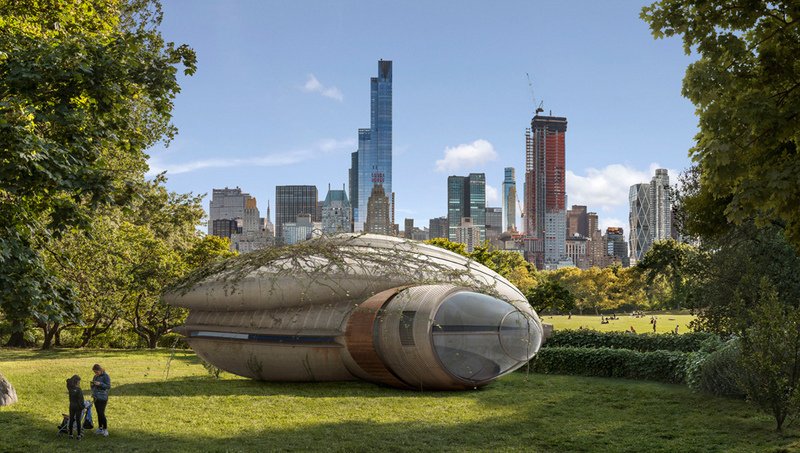 Salinger’s Refuge, 2017. Image by Dionisio González via the Galerie Richard New York.
Salinger’s Refuge, 2017. Image by Dionisio González via the Galerie Richard New York.
For this exhibition, González drew inspiration from thinkers like Walter Benjamin and Horkheimer as well as from the article “Frederick Law Olmsted and the Dialectical Landscape” by Robert Smithson, which defines the dialectical as “a way of seeing things in a manifold of relations, not as isolated objects.” Central Park, argues Smithson, was less of a singular entity than a collision of moving parts and perspectives, brought together to create a picturesque landscape. It was designed to incorporate the natural rifts and valleys in the land left by glaciers one million years ago.
“Olmstead’s Eye” is based on Robert Smithson, who wrote the article on Olmsted, and the last is inspired by Walter Benjamin, the famous philosopher who titled one of his works about the poet Charles Baudelaire “Central Park” and wrote the The Arcades Project, about Paris.
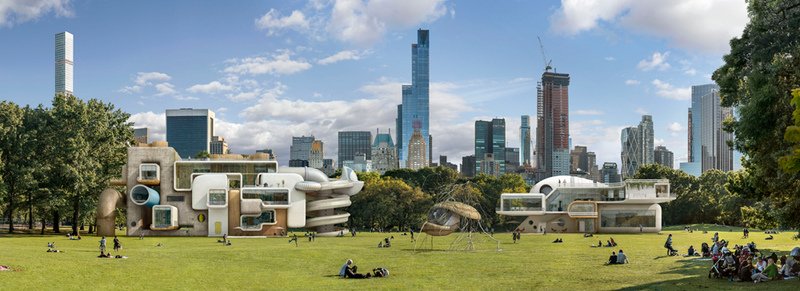 Olmstead’s Eye. Image by Dionisio González via the Galerie Richard New York.
Olmstead’s Eye. Image by Dionisio González via the Galerie Richard New York.
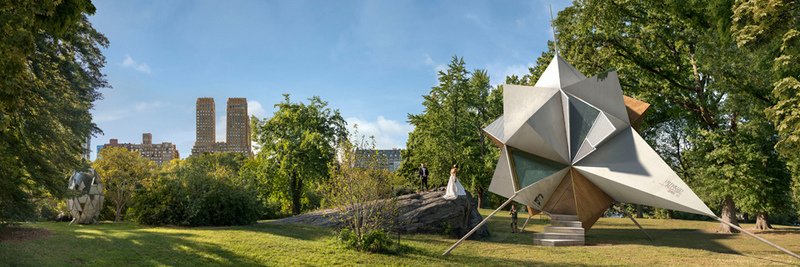 W. Benjamin’s Cabin. Image by Dionisio González via the Galerie Richard New York.
W. Benjamin’s Cabin. Image by Dionisio González via the Galerie Richard New York.
The installations are alien structures, stark, apocalyptic and ostensibly modern amidst the park’s cheery green landscape. The fact that they are described as shelters creates a dichotomy and forces the viewer to ask: what is shelter, really? Is it a city built to elevate human progress to the highest level, always distancing us from the wildness of our animal past, or is it a green space away from the noise of civilization?
On the flip side, “Dialectic Landscape” is a series of five digital photographs intended to highlight the variety of perspectives that prevent New York from ever existing as a static entity. There are about a billion different ways to see and perceive the city, and in his photographs González chooses five perspectives: one views the place where midtown’s buildings trail off into Central Park, one observes Central Park facing west to east, one is a view from the High Line, another a view from a high-speed subway train.
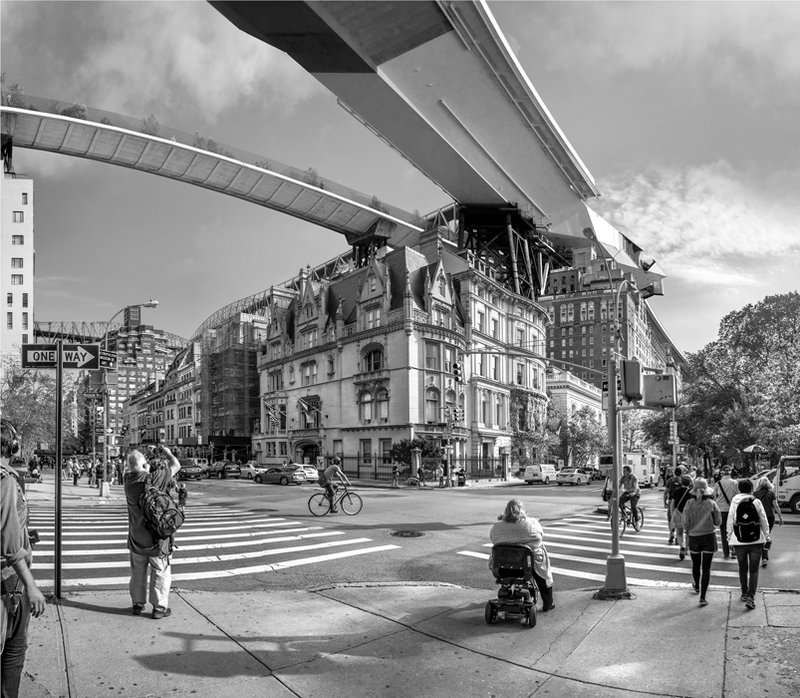 Dialectical Landscape 7. Image by Dionisio González via the Galerie Richard New York.
Dialectical Landscape 7. Image by Dionisio González via the Galerie Richard New York.
González’s images pay tribute to the park’s dichotomous history, and to the many different levels and viewpoints that comprise the city as a whole. The constant movement, from up at the top of skyscrapers to below in the subway, from steel and smoky streets to green trees and lakes, defines the city as much as it prevents the city from ever being defined.
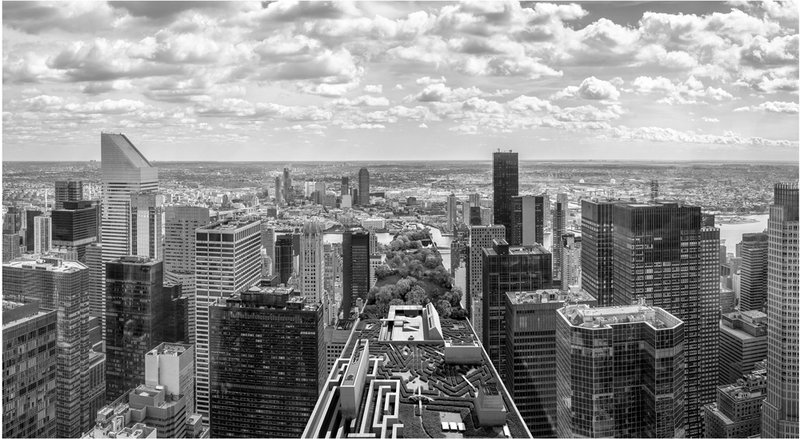 Dialectical Landscape 1. Image by Dionisio González via the Galerie Richard New York.
Dialectical Landscape 1. Image by Dionisio González via the Galerie Richard New York.
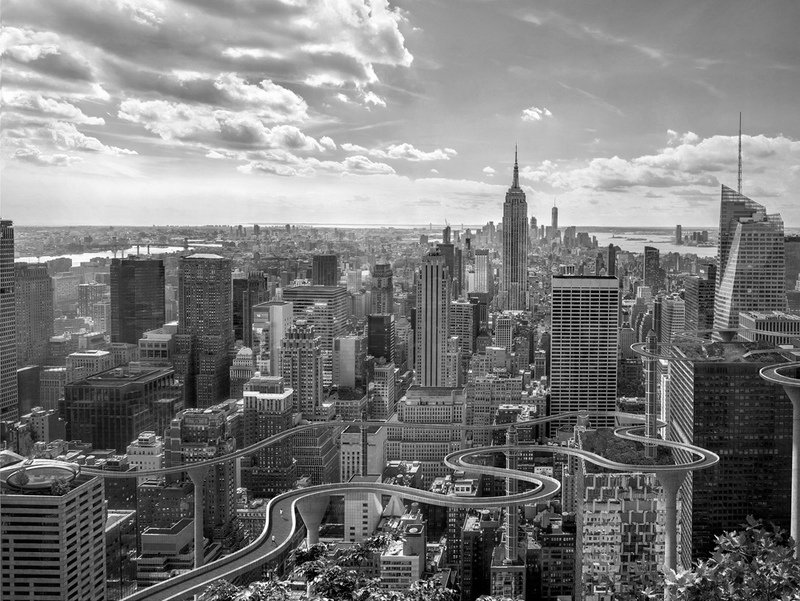 Dialectical Landscape 3. Image by Dionisio González via the Galerie Richard New York.
Dialectical Landscape 3. Image by Dionisio González via the Galerie Richard New York.
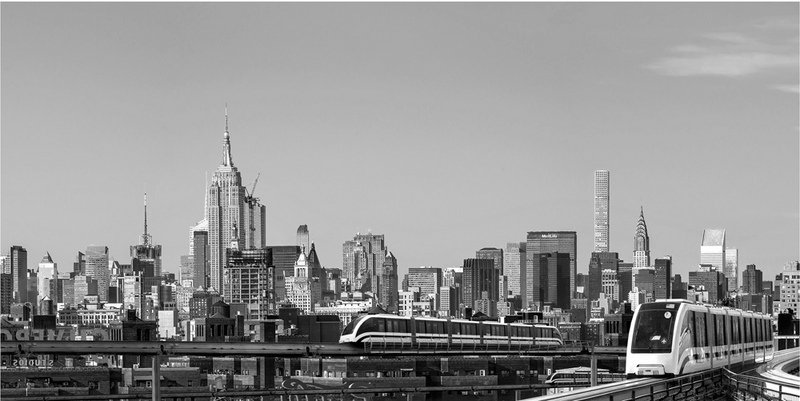 Dialectical Landscape 4. Image by Dionisio González via the Galerie Richard New York.
Dialectical Landscape 4. Image by Dionisio González via the Galerie Richard New York.
A far cry from Midtown‘s towering buildings, the park does almost resemble a black hole amidst the towering skyscrapers of the city. One minute everything is metallic, and all of a sudden it all drops away into green. González’s sculptures play on this idea.
González’s point, presumably, is to make us ask these questions, not to answer them. We exist at a crossroad of these convergent forces, and everyone has a different point of view, and there is a lot to be gained from seeing from other perspectives, especially in a city as full of viewpoints as New York.
The exhibition will run through August 28, 2017.
For more, check out 10 outrageous projects that were never built NYC, this article on the top 10 secrets of Central Park and this article about the 2017 NYC summer outdoor-movie screening schedule.
